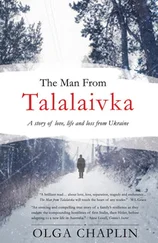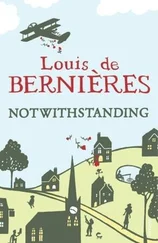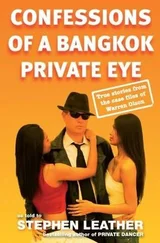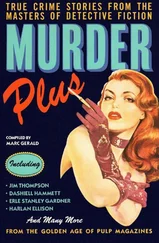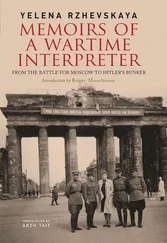I went back to find Viktoria. In early summer when fighting had intensified, she and her family had fled to the safety of a nearby monastery in which many had sought shelter. They were away for some six weeks. All the men who had manned the barricade near her apartment had run away and not come back. Many had gone to Russia, she said. Who wanted to risk retribution? On September 8 Amnesty International issued a briefing in which it accused the Ukrainian Aidar volunteer battalion of being “involved in widespread abuses, including abductions, unlawful detention, ill-treatment, theft, extortion, and possible executions.” They were not in Sloviansk and there were no reports of such things happening here, but who would have waited to see?
In the lobby of the Sloviansk city administration building, there were two transparent boxes for people to drop notes in. Sheets taped on the front declared: “For Citizens’ Letters.” They also gave the phone numbers of the police and the SBU, the Ukrainian intelligence service. Inside the boxes were notes people had written denouncing those who they said had helped the rebels. A policeman at the door said that 80 percent of them were from people who had disputes with their neighbors, and wanted to get them into trouble. This reminded me of something that Charles King, an American academic and historian of the Black Sea, had written about in his history of Odessa. After the Second World War it was politically expedient for the Soviet authorities to declare the port a “Hero City.” From 1941 to 1944 it had been occupied by the Romanians, who were allied with the Nazis. In fact, with some notable exceptions, its inhabitants had not been so heroic. Before the war it was common for people to snitch to the NKVD, the predecessor of the KGB, about their neighbors, if they had a dispute with them. After the fall of the city, people passed seamlessly to denouncing their neighbors as Jews or communists. Then, with the return of Soviet power, they began accusing them of being collaborators. Presumably they were denouncing one another to the tsar’s secret police before communism too. On the surface all looked calm in Sloviansk. Only a local could feel the nasty undercurrents here.
Viktoria’s husband was looking for a new job. She still had no work and they still had no money. When the rebels fled, she said, the locals broke into the building that had served as their HQ and took the food they found there, which “they had stolen from the shops.” The SBU had come by to ask questions about who had been helping the rebels and who had given them food on the barricade. She and her husband had been standing outside having a smoke. They said they did not know who had helped the rebels because they had been away. Of course she did know, but “I don’t want problems,” and anyway, “they have left.” I told her about the boxes I had seen in the administration building, and she explained that this was precisely why the SBU men had come calling. It was mostly old women who wrote these letters, when they had had an argument with a neighbor. In this case an old lady who did not like the woman who lived opposite her had denounced her. Had that woman in fact helped the rebels? “We said it was not true,” but she had “given them some borsch… once.” What did she think now the Ukrainians were back? “I am just happy we are home,” but “it makes no difference to me.”
One year after I first met her, things were looking up. Viktoria’s husband had found a new job. She had also gotten a job in the local kindergarten, but left because she did not like it, and still wanted to be a schoolteacher. Apart from that, they were helping her husband’s parents tend their vegetables in the allotment, and while life was still tough, “at least we have a lot of potatoes to eat, though I don’t know how we will manage in winter. The main thing is that there is no shooting.”
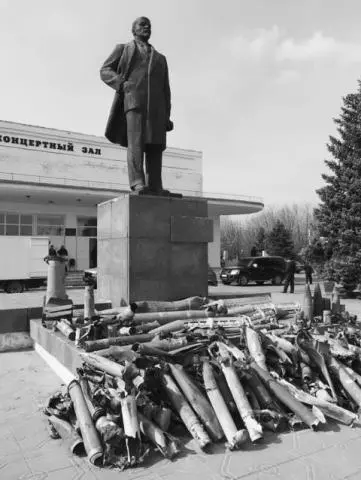
Lenin surrounded by shell casings in Pervomaysk, in rebel-held territory in Lugansk. March 2015.
“Are they waiting for us?” It was March 2015, almost a year since the beginning of the war, and I had come to see Pervomaysk in rebel territory, right on the front line. The first person I met was Olga Ischenko, the mayor. She was asking me because when I introduced myself, I had mentioned that three days earlier I had been in Popasnaya, the Ukrainian-held town eight kilometers away. She wanted to know if people there were desperate to be liberated from the rule of Ukrainian “fascists.” Outside the town hall is a statue of Lenin, in front of which have been stacked unexploded artillery shells and the remains of Grad and Smerch missiles fired at Pervomaysk from Popasnaya.
Before we started talking, I wanted to get a few things straight. How long had she been mayor? Alarmingly, Olga’s eyes suddenly filled with tears. In January, she explained, her husband Evgeny Ischenko, who had been the mayor, was murdered along with three others, so she had taken over after that. “It was necessary to take the position to prevent armed robbery and looting in town.” Her husband was a Cossack leader of men supposed to be part of the armed forces of the Lugansk People’s Republic or LNR, to use its Russian acronym, the second breakaway rebel territory along with the Donetsk People’s Republic.
The mayor was thirty-seven years old and had two children, one aged nine and another nine months old. She said “nobody knows for sure” who killed her husband, and she was vague about who might have looted the town had she not taken power. When her husband died, Igor Plotnitsky, the LNR leader, blamed Ukrainians, but it was actually widely believed that the murder was an inside job, part of a bloody local power struggle. In December 2014, when Ukrainian missiles hit a building in town, the angry Evgeny, shouting on camera—you can find this easily on YouTube—denounced Plotnitsky for having signed what was then the first Minsk ceasefire with the Ukrainian side on September 5. In fact this was negotiated with Russia, but for form’s sake Plotnitsky had to sign for the LNR. Still, Evegny railed: “You fucking vilely sign this agreement? We will turn all our weapons around… against you!” Pushing rubble away from the head of a woman whose body had been crushed under a piece of concrete, he shouted: “Sign your fucking peace agreement on the corpse of this woman!”
Now there was a lull in the fighting, following the signing in Minsk of the second ceasefire agreement, which officially began on February 15. This made it easier to travel about and to get to Pervomaysk from Donetsk, since the road between them led through Debaltseve, which had fallen to the rebels two days after the ceasefire began. Both towns were badly damaged.
In 2011 there were estimated to be just under 39,000 people in Pervomaysk. According to Olga, during the worst of the fighting the population dropped to 8,000, but now it had risen to 18,000. It was a figure that strained credibility. Since no one here believed that the ceasefire was much more than a lull, it seemed to me that far fewer had returned. “We are going to take our land back,” said Olga, by which she meant at the very least the whole of Lugansk oblast, including neighboring Popasnaya. In the future, she said, the LNR should become a republic within Russia.
In a nearby housing project, I saw a block that had been completely burned out. Some apartments had gaping holes where they had taken direct hits. There was damage everywhere. The glass from most windows was gone, but they were either boarded up or patched with plastic sheeting. On one street, the corner of a building had come down. Oddly, bottles of shampoo remained on the shelf in what was once a bathroom, which was now part of the rubble beneath it. There were few people on the streets, even though it was quiet, spring had begun and that day the sun was being eclipsed by the moon.
Читать дальше


